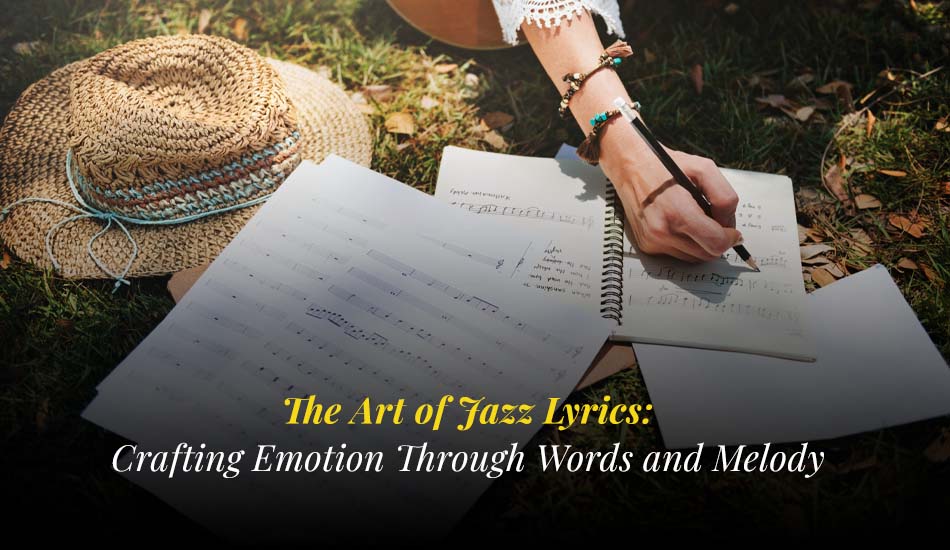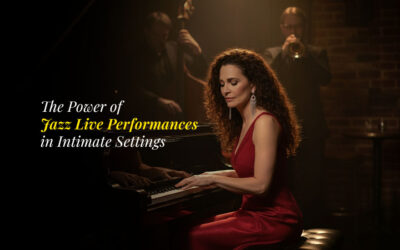The rhythm and harmony must attain the jazziness of the music. Unlike the rest of the other music types, the new jazz releases in 2025 give you expressive freedom and individual context, both through instrument performance and with words. For a jazz singer, it is both an art and a craft to write lyrics that catch the mood of the music while leaving room for interpretation.
Understanding jazz and its unique characteristics
Jazz is a kind of stuff that can be caught by a leash, but on paper, why? But Jazz, the essence is not in its theme or even parts thereof; it is clearly who answers to whom when living with jazz! Sometimes, it has flirted with the blues and become gospel music. But sometimes, how can we not be moved by the sound which has reached its zenith and is nothing more than classical music? And when at last all these materials are put together, a new product is born, jazz-style pieces in this way entirely from scratch.
Jazz lyrics are put together to express the mood of the song, and matters of life are sung with those words and tunes. But pieces such as “Misty” or “Round Midnight” carry deep moods and also employ a high plane of super-excellence language throughout the entire song.
The Role of Rhythm in Jazz Lyrics
Jazz poetry thinks more about how words relate to musical phrases than taking pains to rhyme. Often in jazz, one plays behind or ahead of the beat that there is barely a rigid pulse, and all sorts of syncopations come out. It’s just a feeling! Lyrics must therefore follow suit. Keep an eye on words that count for a significant number of beats in both song and verse. For example, the syllabic stress patterns of “blue-tooth building” are governed more by natural speech rhythms than what an observant listener might hear as simple stress and close diphthongs. Try reading through your lyrics over a few different jazz instrumentals.
Changing emotion through jazz lyrics
More than a vocalist or a jazz singer, they are storytellers. Make sure your lyrics allow for emotional interpretation, writing from a place of vulnerability, introspection, or even playful sarcasm. Everything goes in Jazz. Instead of explaining every detail, focus on evocative images. A single line like “The night kissed me goodbye” says much more than a verse filled with explanatory exposition. Trust your audience to feel what you mean, even if you don’t spell it out.
The structure of jazz lyrics
Most jazz standards are written in AABA form. In this structure, the first two parts share the same melody and lyrics, while the third part introduces a completely new theme with different words for that music. Finally, all four parts of that song return to their original tune again.
Take a historical example:
A: You don’t know what love is…
A: Until you’ve learned the meaning of the blues…
B: Love is just a lie made to make you cry…
A: You don’t know what love is…
This structure encourages repetition and variation, allowing both the jazz singer and instrumentalists to explore the theme emotionally and musically.
Writing the perfect jazz lyric
Here are a few practical tips
- Begin with the mood- Is this a ballad of heartbreak, a playful flirtation, or a midnight confession?
- Use striking images – Metaphors, similes, and sensory language breathe life into lyrics.
- Leave space in your words – Often, in the world of jazz, vocals are just as important as instrumentals.
- Stay flexible – Be ready to change lines to better suit the phrasing or melody.
If you’re inspired by new jazz releases 2025, look at how contemporary artists are bringing classic lyricism together with modern production. There’s this growing trend of merging verse poetry with jazz music so that the lyrics feel fresh but also retain their roots.
Jazz Lyrics: Example & Case Research
The wrong place on random independent miscellaneous musical odds chants the opportunity “My Funny Valentine” with a Musical Identity All Its Own. For example, a jazz vocalist needs material that enables them to earnestly accompany their personality. Another such piece is “The Flea Markets of Paris” from Sylvia Brooks ‘ signature album-this sentimental work, without much language at all, paints such a vivid picture. These are not merely lyrics set to tunes, but they have captured scenes which were once forever lost.
Overcoming Common Challenges In Jazz Lyric Writing
- Conquering Common Problems It’s Just A Draft: There is no need to use so many words. In jazz a melody needs plenty of space or it may not have the right atmosphere.
- Cheesy Rhymes: In jazz it’s not as important to rhyme, and don’t stick to depending on any particular structure.
- The most important thing for successful lyricism is feeling + meaning.
- Ignoring The Lyrics While The Air Is Shaped: With the melody in mind, rewrite what you’ve written. A great line that doesn’t sing is still a great line in need of changing.
Final Tips For Aspiring Jazz Lyrics
- Listen. Study deeply: Let old voices of the jazz masters along with current ones, serve as your teacher.
- Writing often: Treat your poems as a daily practice, and practice it often.
- Collaborate: Pianist-painters will perform live or in pre-recordings the lyrics you put into their hands.
- Stay fresh: Go to hear live music; read literature of all sorts and get out and feel life to achieve a style for vocal jazz music that sounds real, having lived before ever written.
Conclusion
Writing jazz lyrics is a refreshing and delightful task for any lover of music and songs. It doesn’t just mean saying why those lines are clever or clever; there’s also the rhythm, the feeling of emotion in your own voice that comes out when singing the verse, and what comes from an instrument as well-words alone, but accompanied. Whether in 2025 you are writing your next signature vocal jazz song or in 1978 checking out new jazz 78s, which all speak to themselves as one. Native-like integrity and a suave sense of bebop are the ballast of jazz lyrics.




